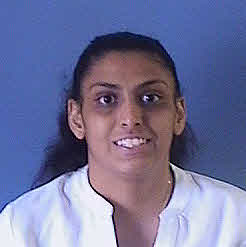Resident Supervision
The Residency Supervision Area is designed to assist hospitals and clinics with the protocols outlined for specific duties residents and fellows can perform. These guidelines are determined by the faculty of the University of Tennessee Health Science Center. Any questions about certain procedures not listed should be addressed to the faculty and not decided by the resident or fellow.
A credentialed and privileged attending physician ultimately provides supervision or oversight of each resident's patient care activities. Direct supervision by a qualified attending physician is required in the OR/Delivery Room or for non-routine invasive procedures like Cardiac Cath, Endoscopy, and Interventional Radiology. The standards for resident supervision in patient care settings are described in GME Policy #410.

Patel, Prisha - PGY - 2
Department of Emergency Medicine
Resident Supervision
All PGY 1, 2, and 3 Emergency Medicine Residents are supervised directly until competence is shown. After the date shown, interns are able to perform the procedures listed with indirect supervision with supervision available upon request. Some residents will achieve competence before the listed date based on clinical rotation schedules, but all should be competent by the date shown in order to advance.
In an EMERGENCY, emergency medicine residents may perform procedures to preserve or restore life or limb or prevent the acute deterioration of patients without delaying for supervision. They are expected to call immediately for supervision or activate the hospital code system (whichever they deem appropriate) while implementing emergency medical services or procedures.
|
Residents can do the following procedures under direct supervision at any time: |
PGY1 year |
PGY2 |
PGY3 |
|
Procedure: |
OK for |
INDIRECT |
Supervision |
|
History & Physical Exam |
July 1 |
X |
X |
|
Incision and Drainage of Abscess |
Aug 1 |
X |
X |
|
Restraint Order (Medical or Violent) |
Aug 1 |
X |
X |
|
Emergency Suturing/wound closure |
Aug 1 |
X |
X |
|
Central Line placement |
Aug 1 |
X |
X |
|
Peripheral Line Placement and IO Device use |
July 1 |
X |
X |
|
Endotracheal Intubation (Direct Laryngoscopy and Video) |
Aug 1 |
X |
X |
|
Cricothyrotomy and surgical airway |
Aug 1 |
X |
X |
|
Chest Thoracostomy Tube placement and management |
Aug 1 |
X |
X |
|
Pericardocentesis |
Aug 1 |
X |
X |
|
Arthrocentesis |
Aug 1 |
X |
X |
|
Paracentesis |
Aug 1 |
X |
X |
|
Pleurocentesis |
Aug 1 |
X |
X |
|
Removal of Superficial Foreign Body |
Aug 1 |
X |
X |
|
Removal of Orifice Foreign Body |
Aug 1 |
X |
X |
|
ED Ultrasound (FAST, FB, CVL) |
Aug 1 |
X |
X |
|
Drainage of Peritonsillar Abscess |
Aug 1 |
X |
X |
|
Rectal Exam with Guaiac Test |
July 1 |
X |
X |
|
Gastrostomy or J tube replacement |
Aug 1 |
X |
X |
|
Nasogastric Tube placement and/or lavage |
Aug 1 |
X |
X |
|
Nasal packing for epistaxis control |
Aug 1 |
X |
X |
|
Pelvic Exam OB/GYN |
July 1 |
X |
X |
|
Vaginal Delivery |
Aug 1 |
X |
X |
|
Perimortum C-section |
Direct only |
X |
X |
|
Management of adult cardiac arrest or resuscitation |
July 1 |
X |
X |
|
Management of pediatric cardiac arrest or resuscitation |
July 1 |
X |
X |
|
Management of adult Trauma, all levels |
July 1 |
X |
X |
|
Management of pediatric Trauma, all levels |
July 1 |
X |
X |
|
Ventilator Management |
Aug 1 |
X |
X |
|
Procedural Sedation (This should always have direct supervision when available) |
Direct only |
Direct only |
X |
|
General & Regional Pain Management |
Aug 1 |
X |
X |
|
Arterial Line Placement and ABG |
Aug 1 |
X |
X |
|
Cardiac Pacing and Defibrillation |
July 1 |
X |
X |
|
Lumbar Puncture |
Aug 1 |
X |
X |
|
Slit lamp eye exam and tonometry |
Aug 1 |
X |
X |
|
Reduction of Fracture or Dislocation |
Aug 1 |
X |
X |
|
Extraordinary Procedures (any the physician deems emergent or save life/limb/etc.) |
July 1 |
X |
X |
|
*ED Thoracotomy (Attending present for all PGY-1 and 2 cases unless not possible)* |
Direct only |
Direct only |
X |
Please contact the EM Program Director for any concerns or
